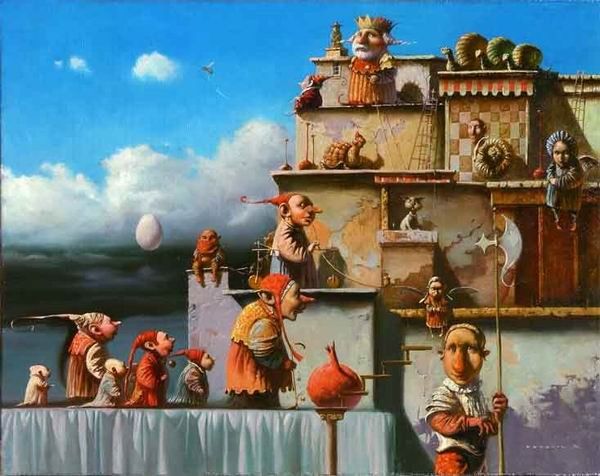
Chessmen Move. But What For Exactly?
Chess Square One is Broken
Let’s put it bluntly, the 1500-year-old-plus traditional way of starting in chess with how chessmen make moves, coming invariably before everything else, is “fundamentally flawed,” Nimzovich[1].
Sounds almost like a heresy as we all have learned movements of pieces first and is hard for us to get the true meaning of Nimzovich’s statement.
Was it a spark of a genius, or a moment of madness? What he was saying was either nonsense, or we didn’t get it at all.
In a not so obvious way, teaching the moves first may actually be detrimental to further block building in chess, causing too many beginners to walk silently away from the game after an overly enthusiastic start.
Today, let us try to shed some light on what the true purpose of movement, in all sort of spatial wars of strategy we wage, is. This may help us better understand the true nature of mobility (maneuver) and what it actually serves. Thus, we may be in a better position to judge Nimzovich’s assertion, and, in the end, get to possibly realize that chess square one has long been overdue for an overhaul.

Nette Robinson, her art is based on mapping the movements of pieces of a complete game, here Capablanca-Spielmann, New York, 1927
How Movement Becomes Effective Action
Like other games of conflict, chess is engagement of mobile power agents in space and time (power and movement are two basic elements of warfare).
Understanding of movement should be a spatial one – we maneuver in space and time to be able to use power with more effect in order to gain some sort of advantage.
From a strategic point of view, we always want to diminish the enemy’s possibility of resistance. If we move frontally on the opponent, it will only consolidate their balance and increase resisting power. In order for our power to hit with effect, the enemy must be taken off guard (in chess, as in war, basketball match or wrestling, the “attempt to throw the opponent without loosening his foothold and upsetting his balance only results in self-exhaustion,” Hart).
To get the opponent out of his balance we must dislocate his forces. This is the real aim of strategy – to get them out of balance. Once in an unstable position, even ever so slightly, they may expose their weaknesses for our power to take advantage of them.
So how is this strategic dislocation produced?
It’s the result of a movement which upsets the enemy’s dispositions and, by compelling a sudden “change of front” dislocates the distribution and organization of his forces, –Liddell Hart, Strategy.
Very importantly, instead of seeking to upset the enemy’s equilibrium by attacking, it must be upset before a real attack can be successfully launched. Maneuver the opponent into a position where their defenses can be penetrated and an attack can be mounted to knock them out.[2]
Scoring in basketball is like executing a winning move in chess: maneuver, maneuver and maneuver some more until the opponent is vulnerable and a winning move or blow can be delivered, –Bobby Fischer.
It is now clear how supremely important fluidity and mobility of forces are. As the German General Heinz Guderian, a WWII proponent of blitzkrieg with highly mobile troops put it: “The engine of the tank is a weapon just as its gun is.”
True, but power is a superior variable in this equation. Mobility only serves power. No matter how mobile the tank may be, it is useless without its gun and suitable targets set up for its use.
Chess Square One Revisited
Now back to the first hour of chess. We now see where the problem is and why early chess teaching is broken. We introduce movement but keep two far more important elements out of the picture, distribution of power (=piece relationships/board vision) and purpose (=planning/strategy) that come before the move, in both importance and chronologically as part of the mental procedure actually producing the move to make next.
The moves-only sends a false signal to the brain. Devoid of meaning and purpose the chess learning process in a vast majority of cases breaks down and ends in a cul-de-sac of failure; or else, poor board vision and serious limitations to future development set in early.
So why don’t we start in chess with power and purpose in place of mere movements? Well, after all, pieces use power and engage with the enemy along the very same geometrical lines they move.
Seems trivial perhaps, but for the young developing chess brain it may make all difference!
Chaos, or harmony, which one?
Originally published on www.iPlayooChess.com
NOTES:
1. The 1929 article “How I became a Grandmaster” in the chess journal Shakhmatny Listok.
2. Not only movement serves attack, it also protects our force. It preserves freedom of action of our troops, and at the same time reduces their vulnerability by thwarting enemy’s plans and actions.


